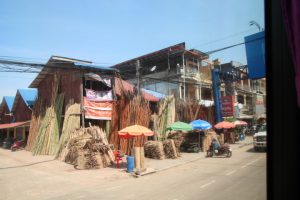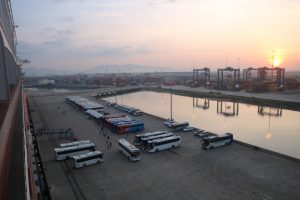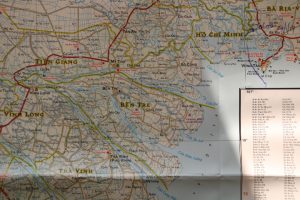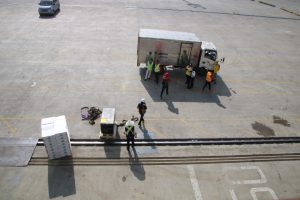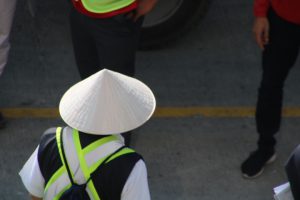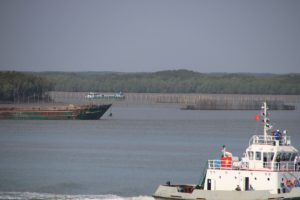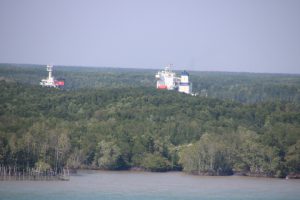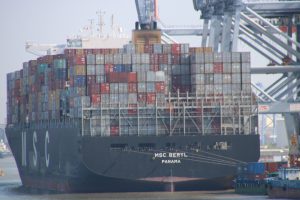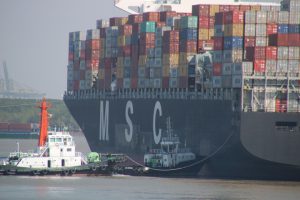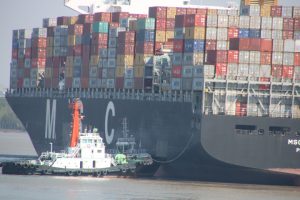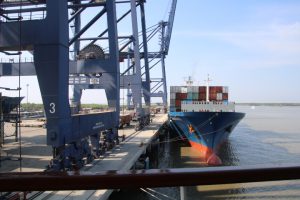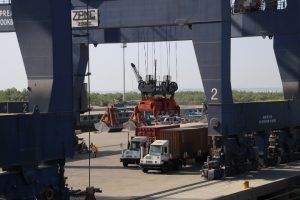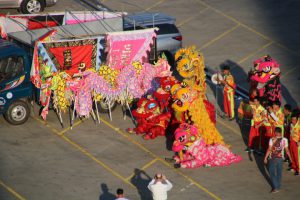Phu My ( Ho Chi Minh City), Vietnam
It was at the entrance to the Mekong River at 4:00 a.m. when the ship left the South China Sea to a deep-water port where the mangroves have been cleared.
In the 1920s and 30s passenger liners were able to navigate the meandering river (known locally as Saigon River) and dock close to the city centre. From our dock we can see local fishermen and trading vessels. Close by is a giant container ship, the MSC Beryl, registered in Panama. The loading of containers was underway when we arrived and by late morning we saw her set sail on a trans-Pacific crossing and a Panama Canal transit. Using its own power it was gently nudged and turned in its own length into the departure channel of the Mekong River.
The Mekong Valley was inhabited about 1000 years ago when rice was grown along the valley. There is evidence in Thailand that rice may have been grown in the region as early as 4000 BC. China has long influenced the Mekong region through art and architecture to language and religion. The trade along the river helped the spread of new ideas and traditions such as the use of canals for transport and irrigation. Many of these are still in use today as we have witnessed.
The principal port of the Funanese, as the people of the delta were known by the Chinese, was Oc-Eco and archaeological explorations have revealed contacts with people from Indonesia, the Middle East and the eastern Mediterranean. All of this before the Northern Europeans.
As we departed a local dance troupe bade us farewell.
